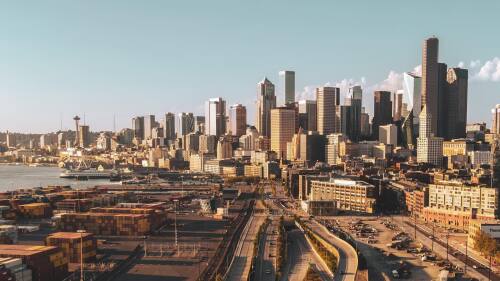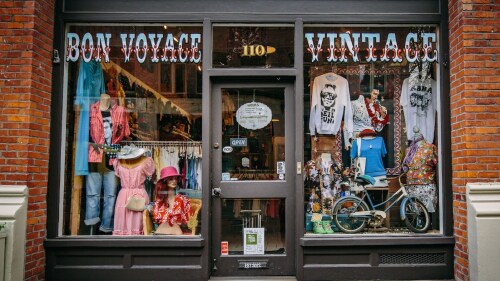It’s been almost five months since Greg Spotts became the Seattle Department of Transportation (SDOT)‘s new director. A lot has already happened in that time— streateries are now a permanent fixture, work finished on the the Green Lake bike lane loop, and the Spokane Street Swing Bridge closed (then re-opened).
So we just had to catch up, get to know this guy, and pick his brain on what’s coming up next.
What does your ideal transportation system look like?
I think my personal mission as a petitioner is to help cities become more walkable, bikeable, transit friendly, greener, safer, and climate resilient. And those things really animate me. But I think they should bubble up from the public rather than me sort of being like a centralized planner, figuring it out, and then telling everyone.
What did residents say they wanted on your recent listening tour trips?
There’s definitely a great outcry to feel safer on bike and on foot. [...] There also seems to be more and more people who want to have options for a lifestyle that’s car light, you know, options to walk or bike to coffee, to the supermarket, to friends houses, to the parks or libraries. They even want the streets to be places to congregate. You know, places to go to, rather than go through. I’m very interested in supporting that.
What modes of transportation is SDOT prioritizing?
Eight years ago, the Levy to Move Seattle was passed, and we’re laser-focused this year on delivering the things we promised. So, a lot of our investment portfolio across modes was determined by what was promised then.
Currently, we’re engaging in this effort to build the Seattle Transportation Plan by doing all this public outreach. Previously, we had a bike plan, pedestrian plan, upgrade plan, a transit access plan — and we’re trying to replace that with one integrated jumbo plan across all the modes.
Sometimes government projects seem like they take awhile to get moving. How have you worked to help speed along important projects that help with things like safety?
There’s two examples that I’m very proud of. The first bike project that was started and finished during my tenure was the Green Lake bike trail. [...] We had all of these orange traffic barrels out that were going to be replaced with a low, precast concrete curb, but the supply chain meant that that was late. But people were already riding on it. So I said, it’s going to be November and raining and cold soon. Can’t we give people a couple of great bike weekends? So, we opened it. And it was really interesting because that resonated beyond just people who bike. But people in the business community took me aside and, keep your pedal to the metal. That’s what we want to see from you. It just gave me a sense that people want us to be nimble, and get things in the ground, and get them open.
That helped inform the situation we found ourselves in when the Spokane Street Bridge got damaged during the ice storm and it was gonna be out for several weeks. The bike community said that when you put out a detour, they’re scary on a bike. They suggested some sort of temporary bike lanes. So we made the decision to rent 1,700 cones and set up this multi-mile-long detour that took you up First Avenue over back over on a West Marginal Way. I love that they made a suggestion and we were on the money with it right away.
What has impressed you so far about Seattle?
Part of what attracted me here was the very sophisticated street design in South Lake Union. I had a staff member give me a tour when I spoke at the American Public Works Association Conference a few years ago and there’s this housing structure called Sitka. It has 15 foot wide rain garden, and then a 15 foot wide sidewalk, there’s bridges and hang spaces over the rain garden. I remember taking pictures and being like, “Why can’t we have this beautiful thing?” So when this job was posted, I had this pre-existing memory of being impressed by Seattle street design and South Lake Union. It’s why its first sort of out-of-California job that I’d applied for.
You moved here from Los Angeles — what are some of the differences between how our cities function transit-wise?
One is that Seattle’s more compact. There is a central business district. But LA has like 99 neighborhoods and 10 different employment centers. The transit planning is really complicated, especially if you’re grafting that on years after building those employment centers. Here, you have a more of a narrow city where most of the movement is North to South. It kind of lends itself more to transit, which I like.
And then also in LA, Public Works and transportation were separate agencies, and they were constantly bickering with each other. It was hard to do really holistic, integrated street design. I love that SDOT has everything above ground, except the street lights.











